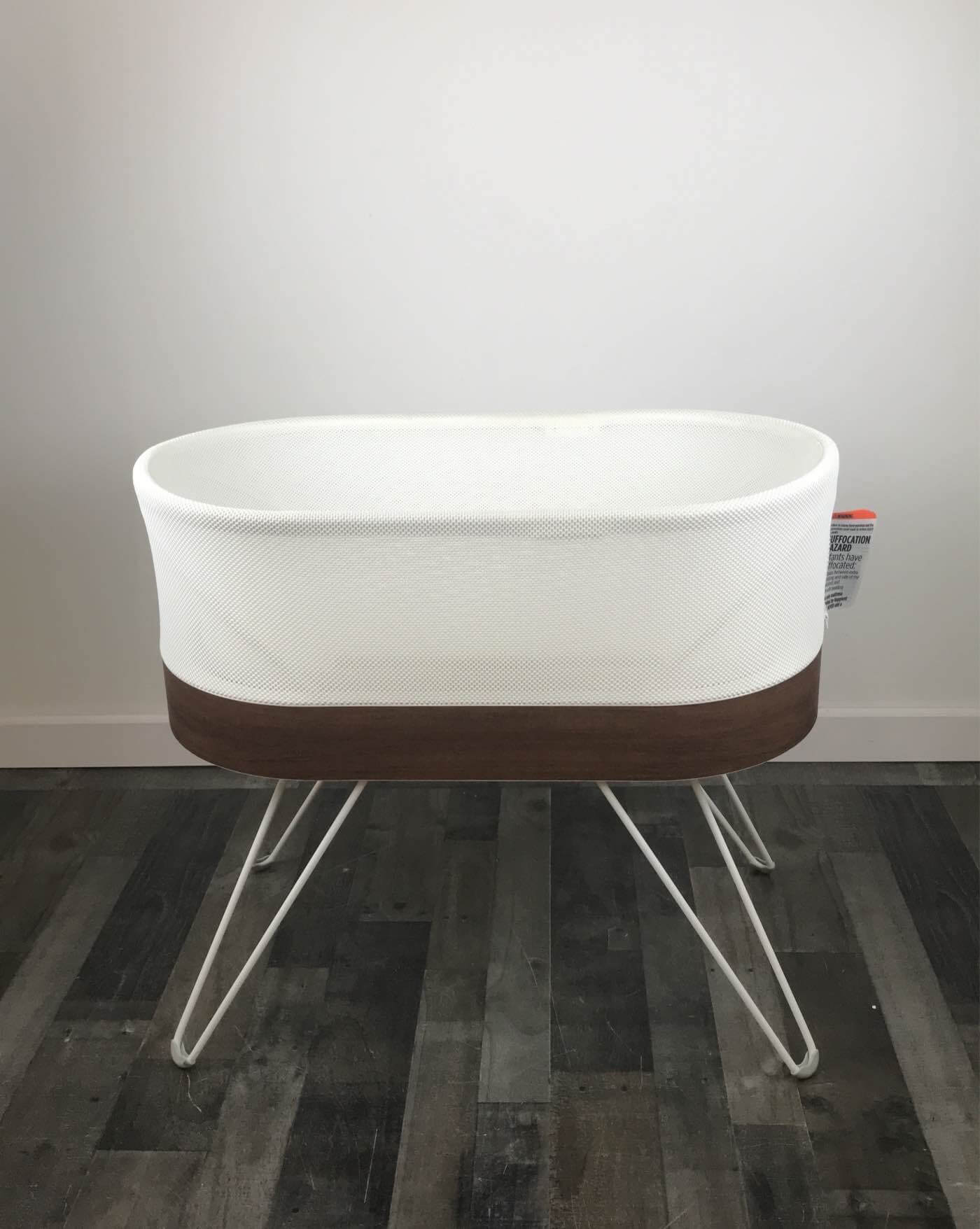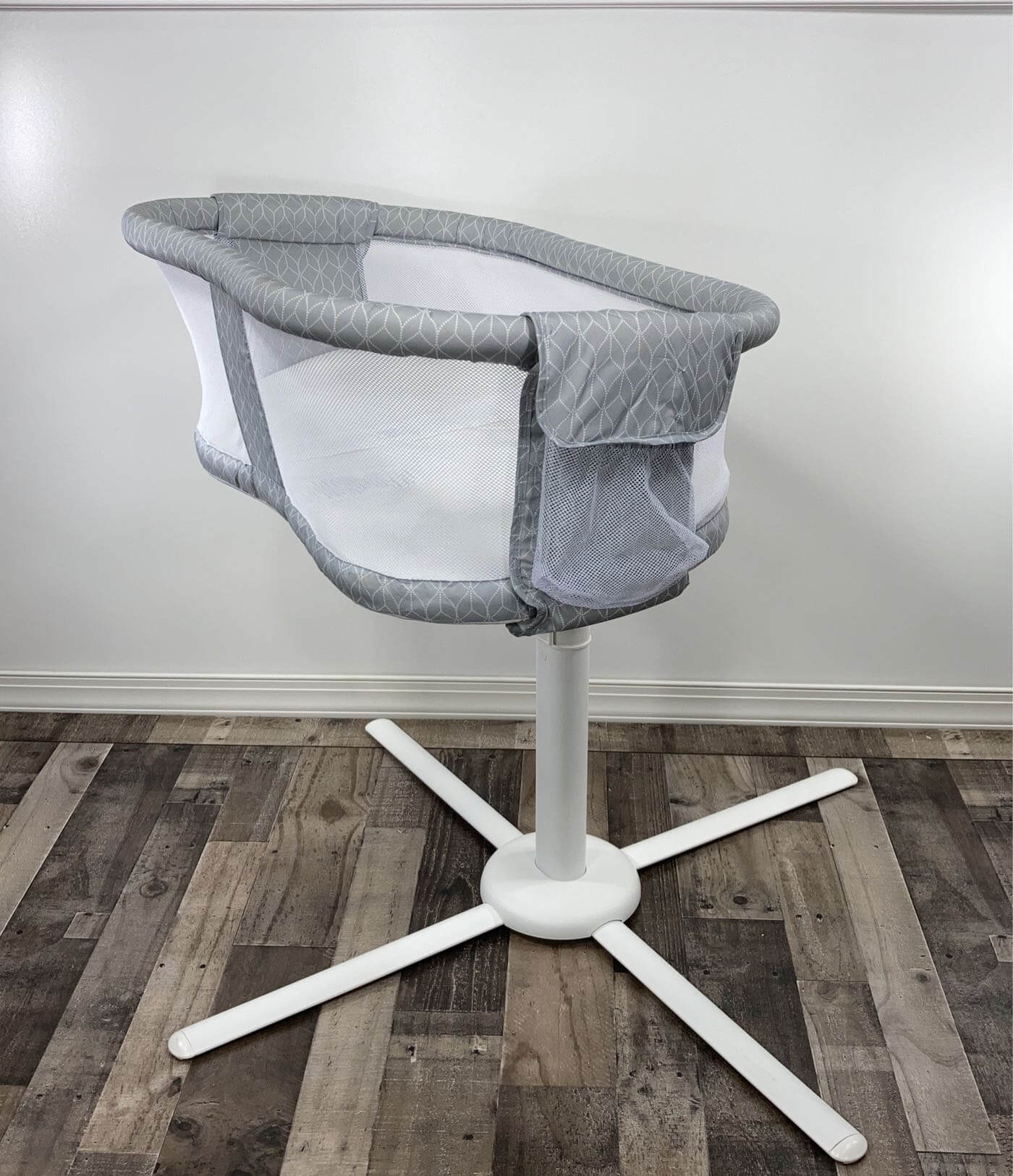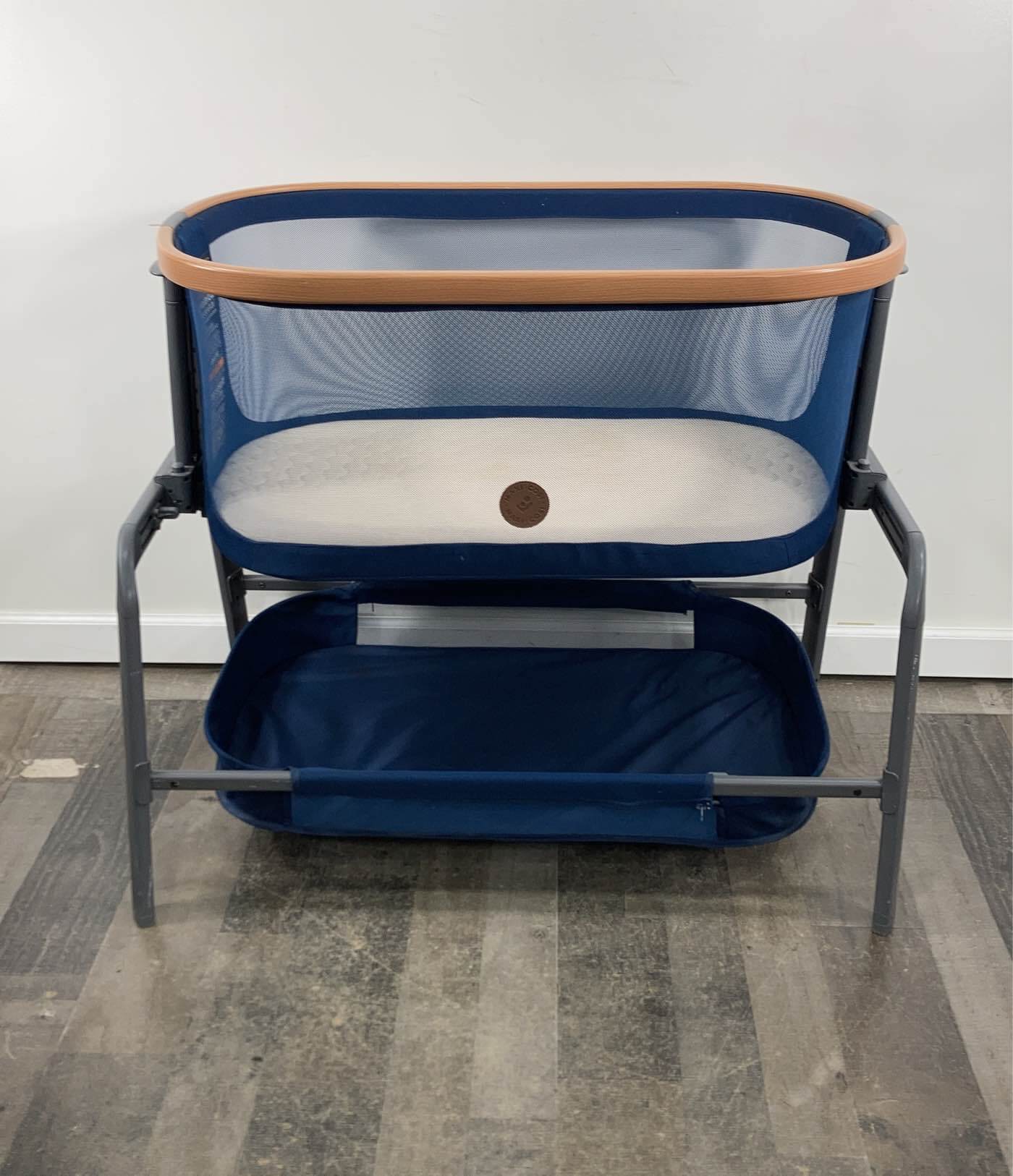
The Best Bassinets for Small Spaces
We pride ourselves in being unbiased gear experts. Learn more about how we research, expertly review and curate products here.
You may put your heart and soul into creating a gorgeous nursery for your little one, but in the early days, the American Academy of Pediatrics says the safest place for your little one to sleep is in their own crib right in the room with you. Here’s the problem with that: Most standard cribs take up a lot of space and can’t easily be moved from room to room without disassembling first.
A bassinet is a great alternative, since it’s just as safe but requires less real estate in tight quarters. Plus, a lot of bassinets are easy to move from place to place—perfect if you want a portable bassinet so you can keep an eye on baby while they nap and you cook dinner at the same time, or if you’re a frequent traveler look for a travel bassinet. Babies also love to feel snug and secure, especially while they sleep, and a bassinet may feel cozier than a large crib.
Sound like a great alternative for your growing family? These are the best bassinets for small spaces, according to our Gear Experts.
1. Snoo

- Retail Price: $1,695
- Avg. GoodBuy Gear Price: $1,029
- Avg. Payout: $840
- Dimensions: 35.83 x 18.9 x 32.28 inches
- Weight: 38 pounds
An affordable bassinet? No, but a lot of new parents say the Snoo is worth its weight in gold, since it’s a rocking bassinet that rocks your baby to sleep. It even speeds up and slows down autonomously based on your baby’s disposition—when they cry, it speeds up; when they settle, it slows.
The bassinet also plays white noise that functions in the same way as the rocking. Additionally, the bassinet syncs with a compatible smartphone app that tracks your baby’s sleep patterns for you. The handsome mesh walls (great for airflow) and wood look is a nice bonus, too.
Pros:
- Stylish
- Soothes baby autonomously
- Compatible smartphone app tracks sleep
Cons:
- Very expensive
- Have to buy specific swaddles separately
2. Halo BassiNest Swivel Sleeper

- Retail Price: $349.99
- Avg. GoodBuy Gear Price: $162.62
- Avg. Payout: $37
- Dimensions: 33 x 23 x 36 inches
- Weight: 42.9 pounds
Because of the way this bassinet is designed, you can tuck it right up next to your bed, so you’re almost sleeping with baby, but still maintaining safe sleep guidelines. The mesh sides allow you to see right into the bassinet and the side is flexible, so as soon as you press down on it, it collapses to allow you to take your little one out without getting up and out of bed.
Just note: If you don’t have room for this one right next to the bed, you might want to consider another option—the foot pedestal does jut out in all directions and could pose a tripping hazard in tight quarters.
Pros:
- Swivels 360 degrees
- Mesh sides allow you to see baby
- Side presses down for easier access
Cons:
- Heavy
- Large base
3. 4Moms mamaRoo Sleep Bassinet

- Retail Price: $349.99
- Avg. GoodBuy Gear Price: $191.66
- Avg. Payout: $96
- Dimensions: 24 x 29 x 39 inches
- Weight: 30.5 pounds
This compact bassinet is half the price of the Snoo but maintains a lot of the same functionality. While it isn’t fully autonomous—you have to manually set the rock and sound settings—you can use a compatible app to change the settings. You don’t have to get out of bed—in fact, you could even change the settings from another room. (There’s also a control panel on the bassinet, if you prefer.)
Another nice bonus for a small bedroom with limited space: This slim bassinet has a storage basket (sold separately) with storage pockets that hang from it to stash essentials like swaddles, pacifiers or diapers.
Pros:
- Multiple movements, speeds and soothing sounds
- Has a timer
- A compatible storage basket is available
Cons:
- Storage basket sold separately
4. Nestig The Wave Crib
- Retail Price: $699
- Avg. GoodBuy Gear Price: N/A
- Dimensions: 24.5 x 31 x 31.5 inches
- Weight: Not listed
Love the idea of purchasing one product and one product only? This crib is for you. Not only is it super attractive and made of safe, natural materials, but it’s also incredibly sustainable. The crib converts from a mini crib that’s about the size of a slim bassinet to a standard crib.
You can even use it well beyond your child’s toddler years since it also converts to a full-size bed when they’re ready to transition to a big kid sleep space. The crib comes with the mini mattress, so all you have to do in the short term is buy a standard mattress (something you’d have to do no matter what crib you transition to). Another perk? The whole thing is on wheels and is super slim, so it can be easily moved from room to room.
Pros:
- Convertible
- Sustainable option
- Stylish
- On wheels
Cons:
- No smart features, like rocking mode
4. Maxi-Cosi Iora Bedside Bassinet

- Retail Price: $229
- Avg. GoodBuy Gear Price: $175.29
- Avg. Payout: $70
- Dimensions: 40.55 x 22.44 x 7.28 inches
- Weight: 11 pounds
There’s tons of flexibility with this lightweight, compact bassinet. It may not be foldable, but it has adjustable height and slides side to side into three different positions—no tools required for assembly or adjustments. The entire bassinet weighs just 11 pounds—a solid 20 less than other options on this list—but is still sturdy enough for comfort.
The unit has additional conveniences for parents, like breathable mesh sides for better viewing of your tiny human, an included storage basket for essentials, and machine-washable fabrics—great for parents of babies who spit up a lot. The dark fabric and wood grain is a nice touch that looks great in any home, too.
Pros:
- Super lightweight bassinet
- Has a storage basket
- Mesh sides
- Multiple height positions; slides side to side
Cons:
- No smart features, like rocking mode
FAQ
Where Do You Put a Bassinet in a Small Room?
Most parents like to put baby’s bassinet right next to the bed, especially if they’re breastfeeding or recovering from a C-section. This way, you can easily attend to or feed the baby in the middle of the night. Some small bassinets are even raised and nestle right up to the bed, so you don’t even have to get up—you can simply reach over.
If your space doesn’t allow for this, you may consider placing the bassinet at the foot of the bed or tucking it in a corner of the room, where it’s out of the general walking path.
When Should a Newborn Stop Sleeping in a Bassinet?
The AAP recommends babies sleep in the same room as their parents (but not bed-share) for at least the first six months—ideally 12 months. But that doesn’t mean baby has to be in a bassinet. Newborns can safely go directly into a crib that meets safety standards outlined by Consumer Product Safety Commission (CPSC), or they can begin their life sleeping in a bassinet.
If your child is in the latter camp, check the specific weight limits and height guidelines on the bassinet you own—baby should move out of the bassinet before they exceed those guidelines. And remember: Bassinets are much easier for mobile babies to crawl out of, so think about your child’s developmental stage, too. If your baby is rolling, pulling themselves up or learning to sit, they should move to a crib immediately.
What’s the Difference Between a Co-sleeper and a Bassinet?
Co-sleepers and bassinets are very similar—they are both smaller, more snug bedside sleepers that keep baby close—but there is an important distinction: Generally, co-sleeper bassinets act as an extension of your own adult bed. While bassinets are independent structures with fully enclosed sides, co-sleepers nestle right up to the bed and have an open side to make it just a little bit easier to access a newborn baby—without directly sharing a bed (something the AAP cautions against).
What Is the Safest Bassinet?
According to the AAP, as long as a bassinet has been given a Children's Product Certificate (CPC) from the CPSC, the sleep space is likely a safe option. That’s because products with a CPC complies with the commission's standards and requirements and have been tested for compliance at a CPSC-accepted, third-party laboratory.
Are Side Sleeper Bassinets Safe?
Side-sleeper bassinets are not consistent with the AAP’s safe sleep guidelines cautioning parents against sharing a bed with their newborn baby. This is because most side-sleepers nestle right up against the bed and have an open side, so there is no physical division between parent and child.
A small bedside bassinet is so much more than space-saving. Sure, these sleep spaces will give you back the square footage you need–especially if you live in a small home or apartment—but a slim bassinet is also one of the safest places for a newborn baby during the first six months or so. They’re also nice and compact, which makes a newborn baby feel safer and more secure while they sleep, increasing the likelihood that you’ll all get more of that coveted—and sometimes hard-to-come-by—sleep.
Interested in more bassinet reviews or small space recommendations? Check out our guide to the best bassinets for tall beds, the best twin bassinets and the best high chairs for small spaces.

